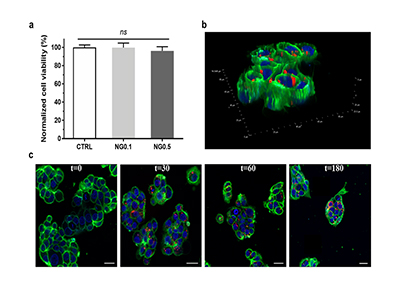Authors: Emanuele Mauria; Manuele Goria; Sara Maria Giannitelli; Andrea Zancla; Pamela Mozetic; Franca Abbruzzese; Nicolò Merendino; Giuseppe Gigli; Filippo Rossi; Marcella Trombetta; Alberto Rainer
Materials Science and Engineering: C
Available online 27 March 2021, 112080
Keywords: Nanoencapsulation; Nanogel; Drug delivery; NAFLD; Hydroxytyrosol TecnoMed Puglia; Associazione Cuore della Puglia
DOI: https://doi.org/10.1016/j.msec.2021.112080
Abstract: Nanomaterials hold promise as a straightforward approach for enhancing the performance of bioactive compounds in several healthcare scenarios. Indeed, nanoencapsulation represents a valuable strategy to preserve the bioactives, maximizing their bioavailability. Here, a nanoencapsulation strategy for the treatment of nonalcoholic fatty liver disease (NAFLD) is presented. NAFLD represents the most common chronic liver disease in Western societies, and still lacks an effective therapy. Hydroxytyrosol (HT), a naturally occurring polyphenol, has been shown to protect against hepatic steatosis through its lipid-lowering, antioxidant and anti-inflammatory activities. However, the efficient delivery of HT to hepatocytes remains a crucial aspect: the design of smart nanogels appears as a promising tool to promote its intracellular uptake. In this paper, we disclose the synthesis of nanogel systems based on polyethylene glycol and polyethyleneimine which have been tested in an in vitro model of hepatic steatosis at two different concentrations (0.1 mg/mL and 0.5 mg/mL), taking advantage of high-content analysis tools. The proposed HT-loaded nanoscaffolds are non-toxic to cells, and their administration showed a significant decrease in the intracellular triglyceride levels, restoring cell viability and outperforming the results achievable with HT in its non-encapsulated form. Moreover, nanogels do not induce oxidative stress, thus demonstrating their biosafety. Overall, the formulated nanogel system achieves superior performance compared to conventional drug administration routes and hence represents a promising strategy for the management of NAFLD.

